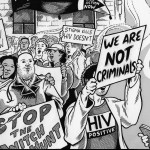The most important thing to know is that if you are diagnosed with HIV and don’t already have health care, you have many options. Connect with a health coverage navigator via your nearest HIV and AIDS service organization or local or state health department.
You can also contact your state’s AIDS Drug Assistance Program (ADAP) directly. Your finances, age, disability status and other factors will determine whether you are eligible for Medicare, Medicaid, ADAP or some combination of the three. Accessing such programs can be confusing, which is why working with a navigator is often preferable to going it alone.
If you are not eligible for Medicare and/or Medicaid, you will likely be eligible for ADAP if your income as an individual is below roughly $60,000 to $75,000. (The exact income cap varies by state; the caps are higher if you live in a household of more than one.)
Depending on your state, this could mean that ADAP either pays directly only for HIV-specific medications and care (how that is defined exactly varies by state) or covers your premiums and other expenses on a comprehensive health plan, such as an Affordable Care Act (ACA, or Obamacare) health insurance marketplace plan. Some state ADAPs will even cover premiums on job-linked health plans or post-job COBRA plans. (Here is a state-by-state breakdown.)
Often, even if Medicare or Medicaid (or both) is your primary insurer, ADAP will help cover costs those plans don’t cover. ADAP may also help you with life essentials key to staying healthy, such as housing assistance, transportation to medical appointments and nutritious food (if you are income-eligible).







Comments
Comments